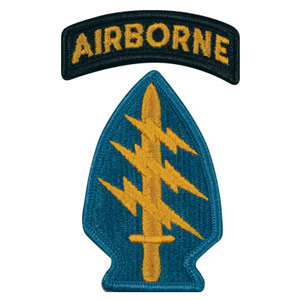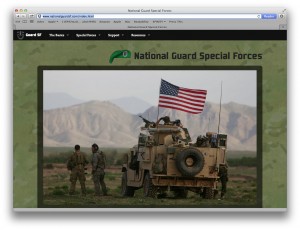Monthly Archives: September 2013
 If you read this blog (boy howdy, is that a dumb-ass opening or what? Of course you read this blog, or, well, you wouldn’t have read that) then you are aware that we’re not fans of David Guth, the KU professor currently enjoying an unscheduled, but paid, vacation for calling for the death of NRA members’ kids. (Of course, if he got what he wanted, it might be an own goal: while some woolly-headed professors were Red Diaper Babies, weren’t most of them rebellious teenage kids of NRA-member parents at one time?). Our comments on Guth are here, and the follow up noting his suspension here.
If you read this blog (boy howdy, is that a dumb-ass opening or what? Of course you read this blog, or, well, you wouldn’t have read that) then you are aware that we’re not fans of David Guth, the KU professor currently enjoying an unscheduled, but paid, vacation for calling for the death of NRA members’ kids. (Of course, if he got what he wanted, it might be an own goal: while some woolly-headed professors were Red Diaper Babies, weren’t most of them rebellious teenage kids of NRA-member parents at one time?). Our comments on Guth are here, and the follow up noting his suspension here.
If you have been reading (ah, much better wording) this blog, you also know we’re fans of defense attorney and lawblogger Ken White at Popehat, a group legal blog. Ken, who objected mildly to our attempts to characterize his politics last time, has written a considered pair of posts on Professor Guth’s situation from a legal point of view. It surprises us not a jot that on the issue of rights, where the good counselor is a better absolutist than we are, he comes down firmly on the side of Guth’s right to say what he said, and the University’s inability (legally speaking) to discipline him for such protected speech. An excerpt:
It’s not clear if Professor Guth intends to invoke God to wish harm on the children of the leadership of the NRA, or the children of all its members, or the children of everyone who disagrees with him. It strikes me as an emotional tweet by an unserious person, perhaps not a good subject for deep analysis.
It is right and fit that Professor Guth experience social consequences, which will include widespread condemnation, shunning, ridicule, contempt, some students avoiding his classes, some colleagues avoiding him, and a loss of reputation and credibility that may or may not strike you as proportionate. Those consequences represent the free speech and free association of others, exercised in the marketplace of ideas.
We’re glad to have been a participant in “widespread condemnation, shunning, ridicule, contempt,” and let’s not ever forget the contumely. We spend a lot of time lacing up opur contumely cleats around here so we can leave contumacious little pock-marks on various professors and other engines of twaddle.
The more difficult question is whether he can, or should, experience government-imposed consequences in the form of his state school disciplining him. On that issue he is differently situated than a private employee.
As I’ve discussed recently, government employees in general and professors in particular enjoy protection from firing over speech that private employees don’t. Some argue that this is objectionable because it represents special rights for government employees. I maintain that it is better seen as a limit on government power.
Guth’s tweet is on an issue of public concern. It’s made by a professor, in a context where the interest in free expression is at its maximum. It’s difficult to see how KU could have an interest in discipline or harmony that overcomes the free expression rights here, as repulsive as the expression is…. Unless KU can make a very strong showing that this impedes discipline and harmony in an environment where unbalanced political rhetoric is commonplace, it shouldn’t be able to discipline him.
In the second post, Ken, first, sticks up for First Amendment absolutism (a clear and principled position consistent with many earlier posts) and then goes on to examine what he calls “Professor Guth’s pretense and parsing.” An excerpt, taken after he documents some truly PhD-level weaseling and trimming on Guth’s part:
Moreover, though Professor Guth tries to walk it back saying he meant “it ought to be the people who believe that guns are so precious that it’s worth spilling blood over” who should be harmed, that’s not what he said either. He said “let it be YOUR sons and daughters.” He suggested the children should suffer for the political positions of their parents. But, under scrutiny, he’s too much of a moral coward to (1) apologize for fiery rhetoric or (2) say that he really meant it. So he parses, weakly and unconvincingly.
The core of Professor Guth’s rhetorical flourish — “next time it should be the children of the people who support this position who suffer” — is familiar. … As long as I’ve been a lawyer, and before, I’ve heard it in discussions of the statutory and constitutional rights of people accused of crimes (“People who support letting this guy go should find out what it’s like to have their child murdered”).
Would Professor Guth support his own rhetoric, carried to other issues?
 We think both of these posts are individually well worth reading, to understand both the legal environment and the principles at stake when we oppose Guth’s malicious venting. So we say Read The Whole Thing™, but since there are two Things, we give them Seussian labels:
We think both of these posts are individually well worth reading, to understand both the legal environment and the principles at stake when we oppose Guth’s malicious venting. So we say Read The Whole Thing™, but since there are two Things, we give them Seussian labels:
You may not be interested in courts or law, but one is reminded of Trotsky’s famous bon mot about the Revolution. In today’s world, lawyers, judges and the decisions they have rendered shape everything from the products we use to our interactions with others — soa certain degree of knowledge is self-preservative. You will be smarter about the law from spending some time with Ken and his fellow bloggers at Popehat.
If you didn’t pay, it’s not legal advice
 Sebastian at SNBQ (aka PA Gun Blog) points out the some bloggers out there are giving people legal advice that could very well land them in Cold Stone College on the long course. Everybody we know who’s ever been to prison (most of whom were either helping keep the denizens on ice, or dropping new ones off), says, literally, “don’t go there,” and it’s hard to imagine a faster or more dependable way to go there than by taking legal advice — about guns, where every paperwork violation is a serious felony — from some random schmo with a blog.
Sebastian at SNBQ (aka PA Gun Blog) points out the some bloggers out there are giving people legal advice that could very well land them in Cold Stone College on the long course. Everybody we know who’s ever been to prison (most of whom were either helping keep the denizens on ice, or dropping new ones off), says, literally, “don’t go there,” and it’s hard to imagine a faster or more dependable way to go there than by taking legal advice — about guns, where every paperwork violation is a serious felony — from some random schmo with a blog.
And yes, it’s fairly meta that we’re random schmoes with blogs and we (and as Seb points out, some other schmoes) are telling you don’t take legal advice from guys like us. But really, don’t.
Both Thirdpower and John Richardson are speaking about an assertion that’s appeared in the blogosphere that Illinois is now a Constitutional Carry state. I’d take anything you hear on the Internet (and I don’t exempt myself from this) as pretty much the polar opposite of actual legal advice. In other words, don’t think because a blogger says you can do X, that means it’s OK to actually go out and do it.
via Don’t Take Legal Advice From Bloggers | Shall Not Be Questioned.
So who do you take legal advice from? That’s easy. Lawyers. And not lawyers on the Internet, even genius law professors like Glenn Reynolds or Eugene Volokh. Power users of the legal profession know this, but people who seldom interact with the law or courts don’t.
Rock bottom line: if you’re about to take some action which may have legal consequences, you need your own lawyer. He or she has to be a real lawyer, with a law school sheepskin and a certificate of admission to the Bar in your state, as well as, for gun laws, the federal bar. (The Supreme Court bar is nice, but you don’t need that… yet. Many lawyers seek admission to the Supreme Court bar as an ego trip, and will never argue a case or file a brief there. still, that certificate on the wall is a marker of your attorney’s professional pride).
How to find a lawyer? Don’t respond to an ad, especially a TV ad. Those are not the law droids you seek. Despite the hordes of attorneys out there, relatively few are experts in gun law; even in populous states, you can often count the true experts on your fingers. So, many people chooose to rely on a state pro-gun organization or gun club for recommendations, and this usually works out well.
Here’s another way that works, and it applies more generally, out beyond the gun-law ghetto. Figure out what your legal question or problem is, and what kind of lawyer addresses it. A wills-and-trusts guy? A criminal lawyer? A litigator? Then ask your local bar association for attorneys that practice in this area. They’ll give you whatever three or so names come up. What we do then is pay that lawyer to answer one question:
Who would you call if you had a problem in this field of law?
Some lawyers will not bill you for answering a simple question like that. In that case you should offer to make a donation to a charity of his or her choice. Get the three names from the three lawyers the bar association threw you. You should see a pattern emerge. (In one memorable case, the first lawyer, call him A, said he was the best, but he’d never represent himself so he’d want X, Y or Z. B and C both put A first and each added a recommendation for X, and one also plumped for Z. We hired A).
It seems like this is wasteful and costly, but not so much as having the second team in the courtroom. One added benefit: if you do this in an actual meeting with the attorneys, even though you pay for their time, it’s money well spent if you have a counterparty to the potential litigation: because they may be locked out of representing your counterparty. For that reason, you want to meet with all of your best-talent picks if you can, and discuss the case. Wasteful? Not if you’ve taken all the top talent off the adverse party’s team for the price of an hour each. (Don’t be too overt about doing this. Lawyers hate this).
But hey, that’s legal advice from a blogger. And legal advice only is worth listening to if it’s (1) from a real lawyer; (2) from your lawyer; and, (3) paid for. If you didn’t get a bill for it, better not act on it.
And one more word of lawyer-user advice: it is far, far less costly to run something by an attorney in advance, than it is to wing it and wind up in a “Better call Saul!” situation. An attorney will also be happier to help you avoid indictment or other legal entanglement, than to help you manage the fallout if such woes betide you. Many of the problems that bedevil attorneys’ clients would never occur if the lawyers had been asked for their counsel beforehand.
Whose German Scientists?
In the Alistair MacLean novel Ice Station Zebra, and indeed in one of the scenes preserved in the necessarily snappier film adaptation, the British scientist (portrayed by Patrick McGoohan, not playing a spy for a change) observed:
The Russians put our camera made by our German scientists and your film made by your German scientists into their satellite made by their German scientists.
The Cold War thriller assumed facts that everybody suspected to be true, but nobody without a security clearance really knew: that Russian technology had gotten a similar boost from captive Germans as American had from acquiring Walter Dornberger and Wernher von Braun and their rocket team.
Over the years, it became possible to guess from Russian advances that we’d gotten the head start in rocket guidance and program management that led to manned space and surface-to-surface missiles. The Russians had gotten some real talent in rocket engine, jet turbine, and turboprop design (to this day, their engines generally have more thrust than their western equivalents). They also got a jump in air-to-surface and surface-to-air missiles; the Germans had operationalized the first (with which they sunk a number of Allied ships) and were close to operational on the latter at war’s end.
Fortunately, it’s no longer that necessary to guess. The National Security Agency has declassified an internal magazine article about German contributions to the Russian missile effort. Some ideas that we took away from this:
- Ivan didn’t really trust his Germans much, and the ones taken to Russia were soon frozen out of design work and shipped home, except for guidance men, who probably took longer to develop good Russian understudies.
- As far as we can tell, none of the Germans became naturalized Soviet citizens.
- The use of these scientists was completely covert; the soviet public never heard their names.
- The scientists were of more help in shaking down processes and overcoming specific logjams than in overall design. The Soviets had their own talent.
But you don’t need to take our word for it. Read The Whole Thing™: early_history_soviet_missile [.pdf]
One would assume — and the writer of the undated NSA document assumes — the the Soviets’ German scientists were pressganged into service. In fact, they seem to have been recruited, using a blandishment that the US ARmy had taken off the table for its Germans: the ability to stay in Germany. In 2003, Anatoly Zak, in Air and Space magazine, explained:
When I met [former Soviet officer Boris] Chertok in Moscow last year, …. his memory of events that took place half a century earlier was still vivid. He recalled the scramble in 1945 as he and his colleagues tried, with little success, to lure top German talent to the Soviet side. His emissaries made risky dashes into the American zone, approaching the rocket specialists with offers of hefty salaries, food rations, and—most importantly—the opportunity to stay in Germany. That was one of the few battles von Braun and his colleagues had lost in negotiating with the Americans, and the Soviet recruiting campaign appealed to the Germans’ longing to remain in their homeland.
Few took the bait. One who did was Helmut Gröttrup, a physicist by training and a top expert on the V-2’s flight control system. Historians have debated why Gröttrup turned down the offer to work in the United States, suggesting that it was a combination of his leftist views and his refusal to become a bit player on von Braun’s team. Chertok thinks the primary reason was Gröttrup’s wish—and the even stronger desire of his wife Irmgard—to stay in Germany. He doesn’t discount, however, the scientist’s left-wing politics. “He was what we would call a social democrat—definitely anti-fascist,” Chertok recalls.
The deal wasn’t kept on the Russian end, and Gröttrup and his colleagurs were spirited off to the USSR the next year. It’s interesting to compare Anatoly Zak’s post-Cold-War take to the NSA’s in-progress-look on the establishment of an institute in Belicherode (which the NSA report identifies as Institut Rabe).
At the end of World War II, German military technology was in several fields the most advanced in the world. They had world-leading small arms, tanks, aircraft, and entire new categories of guided weapons and missiles that the Allies were far from operationalizing. It did them almost no good at all. The Allies had vast quantities of stuff that was, in many cases, not as good; the German innovations were not enough to stem the logistical tide that buried the would-be thousand-year empire. (Not that that outcome is a bad thing, considering the nature of the empire; but we’re prospecting for lessons learned here).
And what happened to the inventions? And even the inventors like Gröttrup and von Braun? If you lose the war, your enemies get them. QED.
Update
Even if it weren’t Friday, it would be just plain wrong to mention the good Herr Doktor without sharing Tom Lehrer’s musical character study:
SF guys die. DOD suits lie.
 The official DOD press release misrepresents the cause of death for two SF soldiers and one SF support soldier who died last week in Gardez, Afghanistan.
The official DOD press release misrepresents the cause of death for two SF soldiers and one SF support soldier who died last week in Gardez, Afghanistan.
They died Sept. 21, at Forward Operating Base Shank, Afghanistan, of wounds suffered when enemy forces attacked their unit with small arms fire while conducting range training in Gardez, Paktia Province, Afghanistan.
Killed were:
Staff Sgt. Liam J. Nevins, 32, of Denver, Colo., assigned to 5th Battalion, 19th Special Forces Group, Watkins, Colo.
Staff Sgt. Timothy R. McGill, 30, of Ramsey, N.J., assigned to 2nd Battalion, 19th Special Forces Group, Middletown, R.I.
Spc. Joshua J. Strickland, 23, of Woodstock, Ga., assigned to Group Support Battalion,
1st Special Forces Group, Joint Base Lewis-McChord, Wash.
via Defense.gov News Release: DoD Identifies Army Casualties.
In fact, the Guard SF (Nevins and McGill) soldiers from the 19th, and the wheeled-vehicle mechanic Strickland, an SF support soldier from the active-duty 1st SFG(A), were gunned down by one of the Afghans they were presumably training. There were no insurgents. There were no enemy forces.
Their Afghan Joes had absorbed enough BRM skills that they blew the assailant away, but not in time to save the three Americans.
Just because it’s graphic, doesn’t mean it’s good
The Armory Blog had a “pretty cool” graphic that purports to show what country uses what weapon. It would, indeed, be “pretty cool” if it was correct. As they said:
Here’s a pretty cool map of the rifles used by all the various militaries around the world. Guess which rifle is used the most around the world. Click the link for a full-size version of the map to find out.
via World Map Of Military Rifles | Armory Blog.
Here’s the graphic; you can click to embiggen (and will need to do so if you want to read who’s running what — or who the makers of this graphic think is running what).
 First, it’s a gross oversimplification, listing only one rifle per nation. (Note the Army and Marines have some divergent rifles). But even given that, it just ain’t right. It’s all messed up, from Afghanistan to Zimbabwe.
First, it’s a gross oversimplification, listing only one rifle per nation. (Note the Army and Marines have some divergent rifles). But even given that, it just ain’t right. It’s all messed up, from Afghanistan to Zimbabwe.
- Afghanistan? The US and Canada have given them some M16s, M4s and C8s, primarily for their SOF, but for every M16 they have, there are dozens of AKs.
- Bolivia? They have some M16 series rifles, but mostly still run ancient FALs. Some of their units have AKs.
- Czechia? They’re running the Bren 805 now.
- India? The INSAS has been a rather spectacular failure, and India’s seeking a COTS replacement that will almost certainly be an M16 platform weapon.
- Zimbabwe? SA80? Well, according to guys who’ve been there, and Jane’s Infantry Weapons, the Zims run a mix of UDI-era South African small arms (R1 FALs) and AKs, with the AKs beginning in the Nork-trained units in the late 80s and now predominant.
Trying to figure out the source of this, and why it so badly off and so strongly biased towards the M16 platform. The source link at Armory Blog went nowhere. One probable source for some of it is Steve Johnson’s post on The Firearm Blog, which includes a nicer, if M16-series-specific, map.
 This one may not embiggen for technical reasons. You can always check it out at Steve’s blog post, which is five years old (and so probably understates AR global distribution).
This one may not embiggen for technical reasons. You can always check it out at Steve’s blog post, which is five years old (and so probably understates AR global distribution).
But the thing is — Steve’s post is not showing countries where the M16 series is the main combat rifle of the nation. He’s showing countries that use M16 series guns for any purpose. Those are two different things. Steve’s source for many of the countries listed was Colt (as he shows at the linked post) and Colt’s criterion seems to be, “did these guys ever buy an M16?” With the popularity of the M4 among SOF — even Chinese SOF train with their domestic knockoff, although they didn’t at the time Steve made his map — naturally the AR platform seems to be near-universal.
Again, we don’t know who did the original map as featured at The Armory Blog. We’d have a lot more faith in Steve, who had the confidence to put his name on the map! But his map isn’t really an equivalent.
Almost 30 years ago, noted firearms writer Edward C. Ezell tried to address the who-uses-what knowledge gap with the book Small Arms Today, which made the 1984 state of world gun issuance fairly well-documented. The plan was for this to be to the Ezell-edited Small Arms of the World what annual yearbooks were for hardbound encyclopedias. There was a second edition of Small Arms Today in 1988, which can be picked up (at this writing) for under a buck, plus shipping, at Amazon. (The 1984 version is a few bucks, no more). Unfortunately, Ezell’s plans for the continuation of the series ran headlong into his mortality, leaving the 2nd edition hopelessly out of date as the Iron Curtain fell, a wave of democratization surged over Latin America, and Ezell himself passed away in 1993.
Nowadays, the best guide to who-runs-what is still the ponderous Jane’s Infantry Weapons, but the desk reference is priced for government agencies, as is the website, and both are out of the hobbyist or even small-scale professional’s price range. We do find outdated copies, particularly in used bookstores in Northern Virginia and near Columbia, Maryland, reasonably priced.
When guns are outlawed, only outlaws will have fire pits
 Words you don’t often hear together: “fire pit explosion.”
Words you don’t often hear together: “fire pit explosion.”
FAYETTEVILLE, N.C. – Police say a man standing near a fire pit at a North Carolina home has died after an explosion.
A news release from Fayetteville police says the explosion occurred Saturday night in the front yard of a home where several people were standing around a fire pit. Police weren’t immediately able to elaborate on what kind of explosion happened.
They say that the man person was pronounced dead at the scene, and several other people had injuries that didn’t appear life-threatening.
The others injured included two men, a woman and a girl. They were taken to an area hospital.
via Man dies after explosion by fire pit in North Carolina yard | Fox News.
Now, when we saw that, the first thing we thought was: Fayetteville = Army town = 82nd Airborne, various SOF, and some support elements, some of whom have rudimentary brain-stem functions only. Boy howdy, this sure sounds like a GI thinking it was clever to t’row a couple of artillery simulators in the fire. So… we got digging.
Turns out that our idea was dead wrong. The guy was not an Army guy playing with ordnance. Instead, it was just a family/neighborhood fire, using a fire pit and a metal stove, and some genius put a fuel like gasoline inside the wood burning stove. The fuel-air mixture did the rest, and shredded attendees and the nearby terrain with iron-stove-casing shrapnel. A further report:
Fayetteville Fire Department Battalion Chief Ron Lewis says investigators determined that someone poured a gas or gas mixture onto a log inside the front-yard fire pit to accelerate the burning. Lewis says combustible vapors built up in the belly of the stove and ignited after someone stuck a piece of paper inside.
After some time, more details began emerging:
Police today identified the victim who died in the blast as Martin Antoine Blossom, 28, who was visiting his grandmother and family member at the home where the explosion occurred.
Charles Wright, 37, said he was one of about seven adults and 10 children sitting around the fire pit in the driveway of Blossom’s home at 6544 St. Louis St. There was loud conversation, dancing to music playing on a car radio and a little bit of beer, he said.
This local episode of The Big Bang Theory wasn’t funny.
Neighbors said the explosion shook their home like an artillery boom from Fort Bragg.
Steven Kefauver, 12, who was at the fire pit at his next-door neighbor’s house, said his sister, Brianna, 14, had shrapnel wounds on her arm and was taken to Cape Fear Valley Medical Center.
Steven, who appeared to have been crying, had minor wounds on his leg.
“We heard a small boom, and then a big one,” Steven said. “The whole thing blew up.”
Even the light blue Fort Taurus parked nearby was heavily damaged. Wright said it “looked like somebody shot it with an Uzi.”
Fuel-air explosions, and the energy in liquid fuels in general, are vastly underrated as a source of casualty-producing explosions. A novice error is to think the fuel explodes and douse the initiator or flame with a too-rich load of fuel. It’s actually the fuel-air mixture that goes off (and it actally deflagrates, not detonates, which casualties like Blossom and the Wrights might see as an insignificant distinction).
Don’t trust ATF? Neither does the FBI.
 You’d think the Milwaukee Journal-Sentinel, which is reflexively anti-gun and particularly hostile to noncriminal gun owners, would be a natural ally of the federal Bureau of Alcohol, Tobacco, Firearms and Explosives (still so-called despite losing much explosives authority to the FBI some years ago). But the J-S has reported extensively on ATF conduct in its own circulation area, and it’s fair to say they’ve soured a bit on the agency. Enough so that they don’t sweep things under the rug, unlike most of the pro-gun-ban press. For instance, they recently reported on how a failed ATF sting not only put a full-auto M4 in the hands of local criminals (where it still is, despite ATF’s haphazard attempts to find it), but now misconduct by ATF Special Agent Jacqueline Sutton is causing the US Attorney and Milwaukee County DA to abandon the sting’s prosecutions against real criminals, including drug dealers and felons with guns in possession. Sutton, who mismanaged the “Operation Fearless” sting that imploded last year, has received the usual punishment for misconduct in the ATF: promotion to a better-paying gig in Washington headquarters. The criminals who accepted plea bargains are out of luck, they stay in prison; their buddies who held out for trial go free.
You’d think the Milwaukee Journal-Sentinel, which is reflexively anti-gun and particularly hostile to noncriminal gun owners, would be a natural ally of the federal Bureau of Alcohol, Tobacco, Firearms and Explosives (still so-called despite losing much explosives authority to the FBI some years ago). But the J-S has reported extensively on ATF conduct in its own circulation area, and it’s fair to say they’ve soured a bit on the agency. Enough so that they don’t sweep things under the rug, unlike most of the pro-gun-ban press. For instance, they recently reported on how a failed ATF sting not only put a full-auto M4 in the hands of local criminals (where it still is, despite ATF’s haphazard attempts to find it), but now misconduct by ATF Special Agent Jacqueline Sutton is causing the US Attorney and Milwaukee County DA to abandon the sting’s prosecutions against real criminals, including drug dealers and felons with guns in possession. Sutton, who mismanaged the “Operation Fearless” sting that imploded last year, has received the usual punishment for misconduct in the ATF: promotion to a better-paying gig in Washington headquarters. The criminals who accepted plea bargains are out of luck, they stay in prison; their buddies who held out for trial go free.
The latest revelation from the J-S’s John Diedrich: it isn’t just gun owners, Milwaukee’s US and State prosceuting attorneys, and some of the judges in the area. The FBI, too, no longer trusts the ATF, even to do its own fundamental activity, gun traces. After the Washington Navy Yard shooting, FBI agents bypassed the ATF and traced the shooter’s shotgun themselves:
It’s not clear yet how the FBI beat the ATF to the northern Virginia gun shop where Aaron Alexis, 34, bought a Remington 870 Express shotgun and about two dozen shells 48 hours before the shooting.
ATF veterans were stunned by the news.
“I have never seen an instance where ATF had not been relied upon to trace the gun,” said Mike Bouchard, a former ATF assistant director for field operations, according to an Associated Press report. “I have never heard of a situation like that.”
If former ATF agents were astounded by the FBI’s end-around their agency, current ATF spox SA Ginger Colbrun was in full-on butthurt. She whinged:
“ATF is the sole federal agency that is authorized to conduct firearms tracing…. to trace a firearm for a law enforcement agency involved in a bona fide criminal investigation.”
Good luck with that when other agencies have no faith in you.
Maybe the FBI are just bigfooting the case, something the Bureau has a reputation for. But maybe the investigators just don’t want any case that develops to evaporate because of the misconduct of ATF agents or (more likely, given the history) managers.
According to another report, ATF completed its trace anyway and forwarded its results to the FBI — a day or more after pro-active FBI agents, and well-connected DC media for that matter, already had the answers.
It’s unlikely that any criminal case will come out of this trace, a rare case where a criminal bought a gun explicitly for an imminent crime (suicides often buy a guy once they make their decision, but criminals usually acquire guns from clandestine sources, or well in advance). The gun shop appears to have complied with all state and Federal laws; the actual criminal is dead as lead, which makes prosecuting him somewhat moot. But what will come out of this is further strained relations between ATF agents and their Bureau peers.
When you fire a bullet, you own it
 The title of this post isn’t just a truism; it’s a statement the District Attorney made in the trial of a New Hampshire man who shot a young hunter from out of state on the first day of deer season in 2011. It’s a story with several endings, all sad ones; nobody has suggested that Wade Holmes of Lisbon, NH shot knowingly and deliberately, only that he should have known better. It’s one more illustration of our sad aphorism that there are no new accidents, just new people having the same old accidents. Per the Manchester, NH Union Leader:
The title of this post isn’t just a truism; it’s a statement the District Attorney made in the trial of a New Hampshire man who shot a young hunter from out of state on the first day of deer season in 2011. It’s a story with several endings, all sad ones; nobody has suggested that Wade Holmes of Lisbon, NH shot knowingly and deliberately, only that he should have known better. It’s one more illustration of our sad aphorism that there are no new accidents, just new people having the same old accidents. Per the Manchester, NH Union Leader:
Wade S. Holmes, 50, faces a 3 1/2- to seven-year sentence in New Hampshire State Prison. He showed little reaction as he received the verdict; he had insisted he was shooting at a deer when he felled Kenneth Brunelle, 31, of Marlborough, Mass., on the opening day of New Hampshire deer rifle season in 2011.
Brunelle’s father, Cregg Brunelle, said outside the North Haverhill courthouse there were no winners in the case.
“I ain’t going to get my son back, and he’s going to prison,” said Brunelle, who was hunting near his son the day he was killed in the Lisbon woods off Mt. Eustis Road. The younger Brunelle left two young sons, Lucas and Kaleb.
Cregg Brunelle said he was not surprised at the speedy verdict.
“I knew he was guilty; it was just so cut and dried. There were no deer in the area. What was his rush to kill a deer? The season just started.”
“There’s enough heartache to go around,” Grafton County Assistant Attorney Jack Bell, the prosecutor, agreed during an interview after the verdict.
He praised State Police and Fish and Game officers for putting together the case; they had disputed Holmes’ contention that he was firing at a doe when he took a shot from about 75 yards with his Winchester 30-06.
During the five-day trial, defense attorney Leonard Harden pointed out several times that Brunelle was dressed in camouflage. But Bell said what Brunelle was wearing that day was irrelevant.
“Whether he was wearing a tuxedo or a Scuba outfit doesn’t matter. When you fire a bullet, you own it,” Bell told the jury.
via Lisbon hunter found guilty in man’s shooting | New Hampshire Crime.
In this case a momentary error ended one life and disrupted many others, not least the erring shooter’s. How you mistake a man in the end zone for a doe from your own 25-yard-line is beyond us, but it happened.
Holmes was convicted on two charges, negligent homicide and reckless conduct. Under a peculiarity of New Hampshire law, he’ll be sentenced for only one of the two — the prosecutor’s choice. (Bell has not said which he will choose, but the more serious charge is negligent homicide, which has a longer sentennce).
When guns are outlawed, only outlaws will have hunks of pipe
He wasn’t content to beat a man with the pipe. He wasn’t even done when he beat a woman. He also had to tune up a dog. There’s wrong, and there’s vile, and this guy came across the Vile Gap, swingin’ a pipe.
No word on whether the arresting officers gave him a taste of PR-24. Probably not: the sort of people who beat folks with sticks usually have a low tolerance for being beaten with sticks.
Police responded to a home in the Maple Haven neighborhood at 1:30 a.m. Sunday to investigate a home invasion and learned a man had broken in through the back door of a residence, entered the home, assaulted the two occupants and struck their dog with a club or pipe.
The two occupants, a man and woman, were transported to Portsmouth Regional Hospital with minor injuries. Both were treated and released.
Arrested near the scene was Terrence W. Hartley, 47, with a last known address of 179 Tardiff Road, Clinton, Maine. At the time of his arrest, Hartley allegedly had cocaine in his possession.
Hartley was charged with one felony count of burglary, five felony counts of first-degree assault, one felony count of possession of a controlled drug (cocaine) and one misdemeanor count of cruelty to animals.
via Maine man charged with assaulting man, woman, dog in Portsmouth home invasion | New Hampshire Crime.
Clifton, Maine is a good distance from Portsmouth, New Hampshire, but the “last known address” implies he’s a vagrant, drifter, “homeless person,” or just plain bum. Then again, it could be that he and his cohorts have stolen everything portable in Clifton, Maine, and like a plague of locusts, are ranging further afield in search of forage.
Funny how all these folks who can’t afford soap can always seem to afford drugs. This particular loser sent two people to the hospital (and injured the dog, we can’t forget Fido) despite the opinion in some places that crime is caused by guns. There are thousands of guns in Portsmouth, New Hampshire itself and none of them hurt anybody yesterday, unlike Hartley. Indeed, he’s a lucky duck that he didn’t pick a house where the householders have defense means beyond a dog, or he could have seen Sunday’s sunrise in a morgue drawer instead of a cell window.
Humans are capable of redemption and reform, although an awful lot of them go out of their way never to exercise that capability. If we were to bet the odds, it will be the Mr Hartley will be back in the news soon after his release from this trip to prison.
Whereupon he’s going to hurt someone else.
As long as a percentage of humans inclines to outlawry, outlawing the guns of the criminally disinclined is not going to have any impact. But politicians will not refrain from seizing on that glimmering false idea, any more than Terrence Hartley will refrain from stealing and assaulting to seize what he wants.
Update:
Another paper’s story says that what Hartley used was an aluminum baseball bat, that he was wearing a Jason mask, and describes the injuries to the couple and the dog in a little more detail. Also, Hartley and the woman knew each other; she’s an ex sister-in-law of his.
Wednesday Weapons Website of the Week: NGSF
 OK, this is only sort-of weapons related, but it’s right in the mainstream of our Special Forces history. This website is an unofficial recruiting information page for National Guard Special Forces.
OK, this is only sort-of weapons related, but it’s right in the mainstream of our Special Forces history. This website is an unofficial recruiting information page for National Guard Special Forces.
The NGSF is one of the best little secrets of the US military. It lets someone join and serve in one of the most elite of the nation’s forces, while, when not deployed, staying at home, prioritizing school, work, and family as you’d like. It’s a natural fit for an active-duty SF man (or other serviceman who’s SF material), who’s looking to move on in life while keeping his hand in. A number of joiners come in after being off active duty for a while, desirous of renewing and maintaining an association with a caliber of personnel you don’t work with in most civilian workplaces.
How do I join?
Explore. Learn. Not many meet the qualifications required for the opportunity to try out, and fewer still can meet the demands that come with the job. The individuals we seek are those with knowledge, motivation, and preparedness. Fitness, both mentally and physically, is a requirement.
As a rule of thumb, NG SF units prefer new recruits to have already passed the SF Qualification Course (SFQC) or SF Assessment & Selection (SFAS). (It is not unusual for a soldier to complete SFAS close to ETS so that he can join the Guard SF). Non-qualified and non-selected recruits must pass some administrative gates, in order to undergo a short, sharp tryout that is essentially a “gut check” of several day’s duration. This may be as little as a long, hard weekend beginning Friday night and ending with those exhausted candidates who did not quit facing a selection board of qualified NCOs and officers on Sunday afternoon. Candidates are evaluated on fitness, performance, and character. Even completing the weekend may not be enough. Some candidates are advised not to return, others are counseled as to what need improvement if they return, and the remainder, if any, are accepted for training.
It just begins there. Successful candidates may go directly into the SF pipeline where they join 18X recruits and experienced soldiers, or they may prepare during a period of part-time Guard service. They are not deployable as SF soldiers until they go to Camp Mackall and Fort Bragg and complete the entire SFQC exactly as any active-duty SF soldier does. Some use the Guard to “time” attendance at SFQC in and around school schedules or work or family requirements. But there is no slack and no exceptions to standards. As a result, the Guard SF soldier and team is fairly interchangeable with its active-duty counterpart.
The soldier who does not complete SFQC is assessed as to whether a recycle is in his and the Army’s best interest. If so, he gets another chance, either right then at SFQC in the next class, or after returning to the training team on his home unit to prepare to attend again. If he quits, is not recycled, or has an NTR letter (“Never To Return,” usually a marker of a character issue), he returns to his home state where he is reassigned to a non-SF Guard unit for the remainder of his obligation.
Once a candidate has completed SFQC, he starts learning and performing to standard on an SF ODA or ODB. In time his own contribution strengthens his team, his company (ODB) and Group, and Special Forces as a whole. For the qualified soldier there are a wide range school and deployment opportunities. Even in the Guard, you will see the world in ways a tourist never can.
Special Forces is one of the few minority groups that you can actually join. It’s not for everybody. For those it is for, nothing else substitutes. There are many good resources on today’s Wednesday Weapons Website of the Week for those interested.

Kevin was a former Special Forces weapons man (MOS 18B, before the 18 series, 11B with Skill Qualification Indicator of S). His focus was on weapons: their history, effects and employment. He started WeaponsMan.com in 2011 and operated it until he passed away in 2017. His work is being preserved here at the request of his family.


